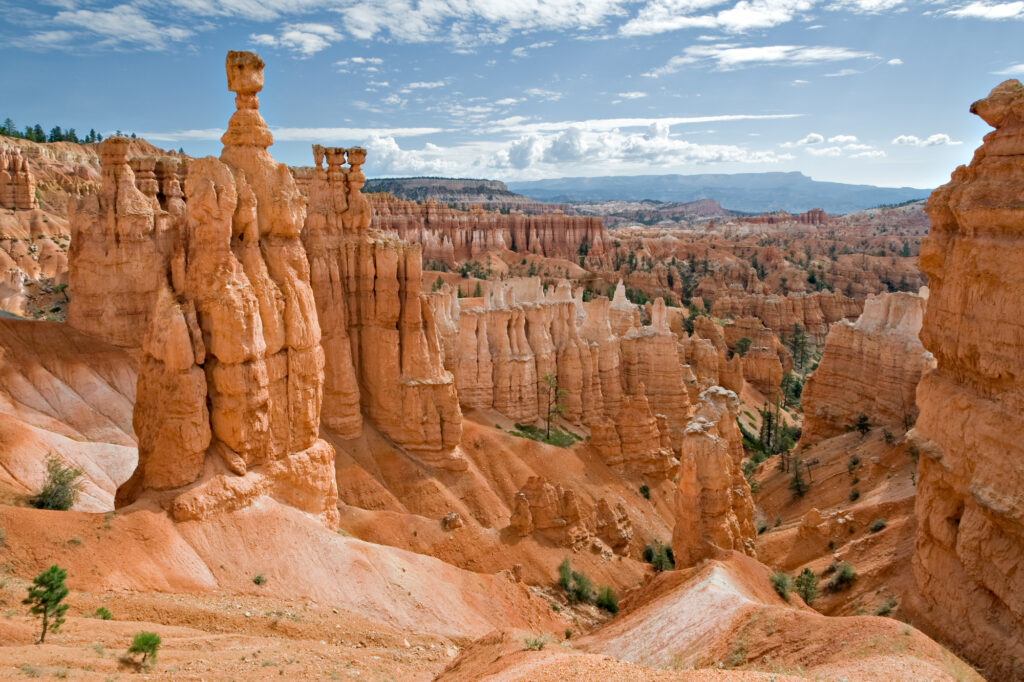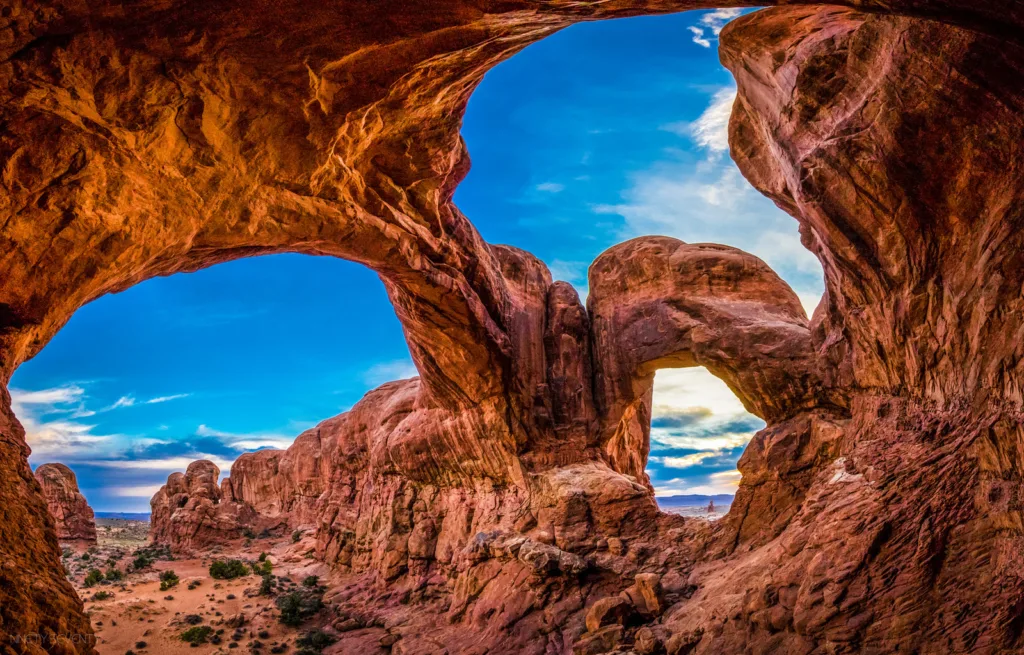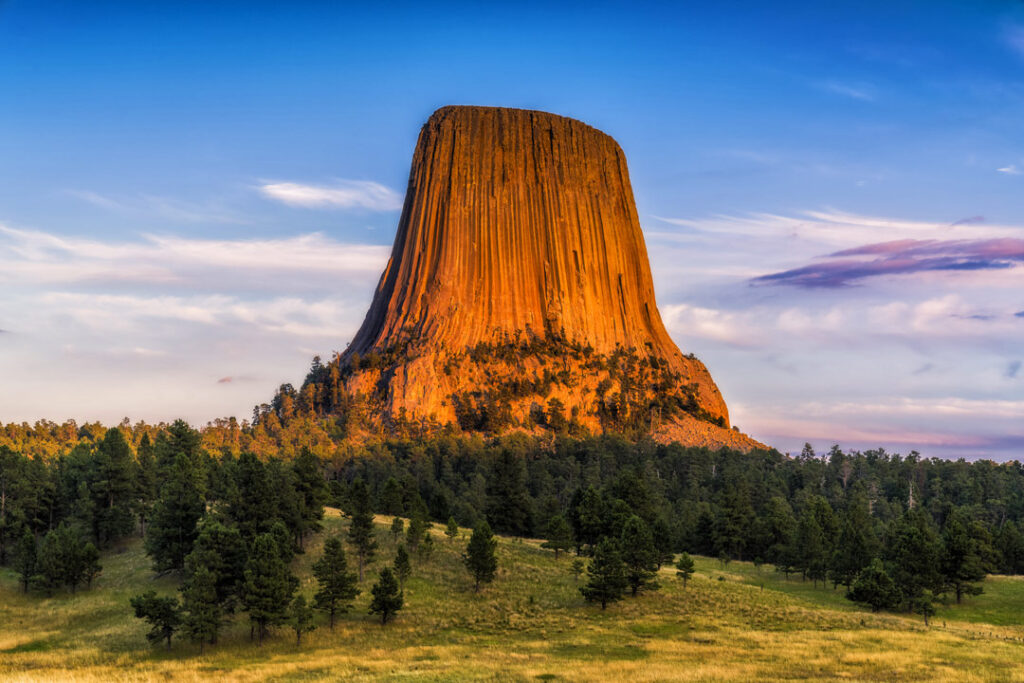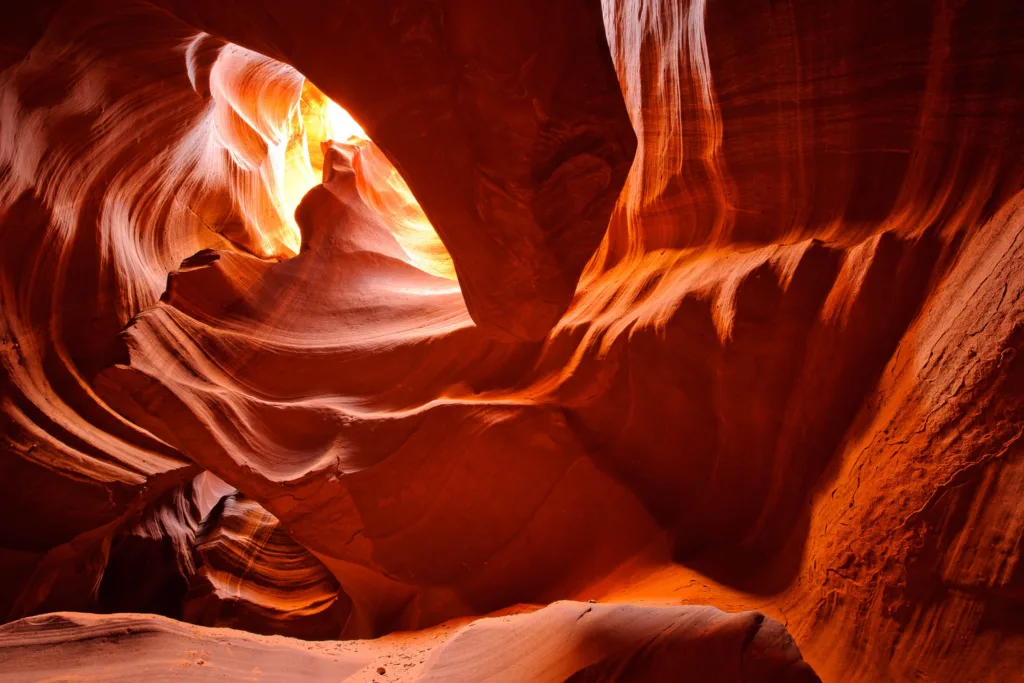The United States is a land of remarkable natural wonders, boasting a diverse array of geologic formations that have captured the imagination of people around the world. From towering cliffs and majestic canyons to volcanic landscapes and surreal rock formations, the country is home to numerous iconic geological sites. These remarkable formations showcase the immense power and beauty of Earth’s geological processes, providing a glimpse into the planet’s ancient past. In this list of the top 10 most iconic geologic formations in the United States, we will explore some of these awe-inspiring landmarks that have become symbols of the country’s natural heritage.
Contents
Grand Canyon (Arizona)

The Grand Canyon in Arizona is undoubtedly one of the most iconic geologic formations in the United States. Carved by the mighty Colorado River over millions of years, the Grand Canyon stretches approximately 277 miles (446 kilometers) in length, up to 18 miles (29 kilometers) in width, and reaches depths of over a mile (1.6 kilometers). Its immense size and stunning geological features have earned it the title of one of the Seven Natural Wonders of the World.
The exposed rock layers of the Grand Canyon provide a remarkable glimpse into Earth’s geologic history, with rocks dating back billions of years. The colorful and diverse rock formations, including the reds of the Supai Group, the browns of the Hermit Shale, and the whites of the Kaibab Limestone, create a breathtaking tapestry of colors.
Yellowstone National Park (Wyoming, Montana, Idaho)

Yellowstone National Park, spanning the states of Wyoming, Montana, and Idaho, is not only renowned for its diverse wildlife and pristine landscapes but also for its exceptional geologic formations. Established as the first national park in the United States and widely considered the first national park in the world, Yellowstone is a geological wonderland that captivates visitors with its extraordinary features.
One of the park’s most iconic geologic formations is the Yellowstone Caldera, often referred to as a supervolcano. This massive volcanic feature is responsible for shaping the park’s landscape over millions of years. It is an active geothermal hotspot, evidenced by the numerous geysers, hot springs, and mud pots scattered throughout the park.
Monument Valley (Arizona, Utah)

Located on the border of Arizona and Utah, Monument Valley is an iconic and breathtaking geologic formation that has become synonymous with the American Southwest. This mesmerizing landscape of sandstone buttes, towering mesas, and expansive desert vistas has captured the imagination of people around the world and has been featured prominently in countless films, commercials, and photographs.
The monumental sandstone formations that define Monument Valley are the result of millions of years of erosion, as wind and water gradually shaped the rock into its distinctive shapes. The buttes, which can reach heights of up to 1,000 feet (300 meters), rise dramatically from the desert floor, creating a striking and otherworldly scene that seems almost unreal.
The most famous of these formations include iconic landmarks such as the Mittens, Elephant Butte, Three Sisters, and Totem Pole. These towering monoliths, with their reddish-orange hues contrasting against the vast blue sky, have become instantly recognizable symbols of the American West.
Bryce Canyon National Park (Utah)

Nestled in the heart of Utah’s rugged and picturesque landscape, Bryce Canyon National Park stands as a testament to the extraordinary power of erosion and the marvels it can create. Renowned for its unique collection of hoodoos, Bryce Canyon is a geological masterpiece that has captivated visitors for generations.
Contrary to its name, Bryce Canyon is not actually a canyon but a series of natural amphitheaters carved into the edge of the Paunsaugunt Plateau. The park’s main attraction lies in its vibrant and whimsical rock formations known as hoodoos. These towering spires, with their distinctive orange, pink, and red hues, stand like sentinels in the canyon, creating an otherworldly and surreal landscape.
The creation of these hoodoos is a result of millions of years of geological processes. The forces of erosion, including the freezing and thawing of water, have gradually shaped the soft limestone and sedimentary rock layers into these fascinating formations. Over time, rainwater and ice have sculpted the rocks, revealing a multitude of delicate arches, bridges, and windows.
The most famous viewpoint in Bryce Canyon National Park is Bryce Amphitheater, where visitors can witness a breathtaking panorama of the park’s remarkable hoodoos. Sunrise and sunset paint the sky with vibrant colors, casting an ethereal glow upon the already mystical landscape, making these times of dry particularly enchanting for visitors.
Arches National Park (Utah)


In the rugged desert landscape of southeastern Utah, Arches National Park stands as a testament to the remarkable power of erosion and the stunning beauty it can create. Known for its extraordinary natural stone arches, this iconic park showcases a collection of unique geological formations that have captivated visitors from around the world.
Arches National Park is home to over 2,000 natural sandstone arches, making it the largest concentration of arches in the world. These arches are the result of millions of years of geologic processes, including the deposition of sand dunes, followed by erosion by wind, water, and ice. The contrasting red-orange sandstone against the bright blue sky creates a striking visual spectacle that is a hallmark of the American Southwest.
Devils Tower (Wyoming)

Rising dramatically from the rolling plains of northeastern Wyoming, Devils Tower is an iconic geologic formation that has captured the imagination of both Native American tribes and modern-day visitors. As the first national monument in the United States, Devils Tower stands as a testament to the country’s commitment to preserving its natural wonders.
This impressive igneous intrusion is a monolithic rock formation that reaches a height of 867 feet (264 meters) above the surrounding landscape. Its unique appearance, with vertical columns and hexagonal patterns, sets it apart from other geologic formations in the region. These columns were formed by the slow cooling and solidification of molten rock, followed by millions of years of erosion that stripped away the softer surrounding rock layers.
The Wave (Arizona, Utah)

Located on the border of Arizona and Utah within the Paria Canyon-Vermilion Cliffs Wilderness, The Wave is a mesmerizing and otherworldly geologic formation that has become an iconic symbol of the American Southwest. Its unique and surreal beauty has made it one of the most sought-after destinations for outdoor enthusiasts, photographers, and nature lovers alike.
The Wave is characterized by its undulating, wave-like patterns that are etched into the sandstone rock, creating a mesmerizing and dreamlike landscape. These intricate and delicate patterns were formed over thousands of years by the erosive forces of wind and water, sculpting the sandstone into a work of art.
Mount Rushmore (South Dakota)
Mount Rushmore, located in the Black Hills of South Dakota, is an iconic geologic and historical monument that represents the rich cultural heritage of the United States. Carved into the granite face of the mountain, the sculpture features the faces of four of the country’s most revered presidents: George Washington, Thomas Jefferson, Abraham Lincoln, and Theodore Roosevelt.
The creation of Mount Rushmore began in 1927 under the direction of sculptor Gutzon Borglum. Over the course of 14 years, with the help of hundreds of workers, the massive granite faces were meticulously sculpted, enduring challenging conditions and engineering feats. Each face measures approximately 60 feet (18 meters) in height and is a testament to human ingenuity and artistic craftsmanship.
Antelope Canyon (Arizona)

Antelope Canyon, located in the heart of the Navajo Nation in Arizona, is a breathtaking slot canyon that has become an icon of natural beauty and wonder. Carved over thousands of years by the forces of water and wind, Antelope Canyon offers a surreal and ethereal landscape that captivates visitors with its stunning rock formations and light beams.
Divided into two sections, Upper Antelope Canyon (also known as “The Crack”) and Lower Antelope Canyon (also known as “The Corkscrew”), both sections showcase narrow, twisting passageways and towering sandstone walls. The unique erosion patterns and smooth curves of the canyon walls create a visually striking environment, making it a paradise for photographers and nature enthusiasts.
Yosemite Valley (California)

Nestled in the majestic Sierra Nevada Mountains of California, Yosemite Valley is a geological marvel and a crown jewel of the national park system. Revered for its awe-inspiring granite cliffs, towering waterfalls, and pristine wilderness, Yosemite Valley offers a glimpse into the immense power and beauty of nature.
Formed by glacial erosion over millions of years, Yosemite Valley stretches for approximately seven miles (11 kilometers) and is home to some of the park’s most iconic features. One of the most prominent landmarks is El Capitan, a towering granite monolith that attracts rock climbers from around the world. Rising about 3,000 feet (900 meters) vertically from the valley floor, El Capitan is a sight to behold and a testament to the forces that have shaped Yosemite’s landscape.
Another famous natural wonder in Yosemite Valley is Half Dome, an iconic granite formation that stands as a symbol of the park. This dome-shaped granite peak, reaching an elevation of 8,842 feet (2,695 meters), is a favorite among hikers who undertake the challenging trek to its summit. The panoramic views from the top offer breathtaking vistas of the valley and surrounding wilderness.




































